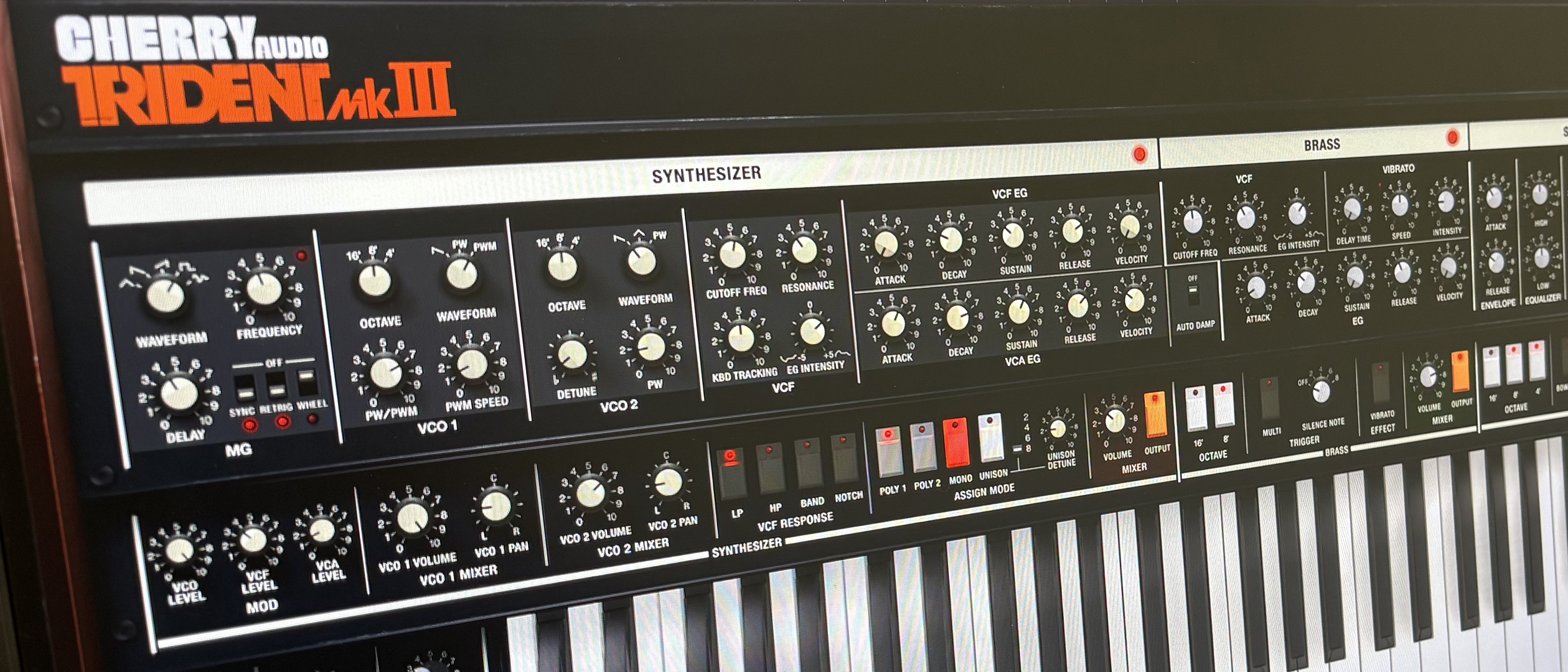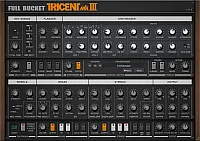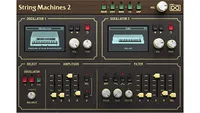MusicRadar Verdict
This stunningly engaging synthesiser resurrects a classic piece of synth history. With new layers of performance control, Trident reaches engaging new heights - it’s another true pinnacle for Cherry Audio.
Pros
- +
Beautifully characterful reimagining of an early '80s Korg synth
- +
Three distinct sections for synthesis, brass and strings (although there is considerable overlap!)
- +
Knob-per-function interface with added Motion and Effects layers
- +
Over 370 included patches, providing tons of simple and heavily layered/motion-led sounds
- +
Very capable DAW-based and live performance tool.
Cons
- -
Hmm, we’ll get back to you on that!
MusicRadar's got your back
What is it?
If you were a synthesizer designer during the late 70s, it’s highly likely that aspects of your design might have incorporated some of the clichéd sounds of the era, influenced by instruments such as home organs (which really were a thing back then!) Musical history has sympathetically treated some of these instruments, with string machines being at the top of the acoustic/electronic hybrid tree.
So imagine the concept of an instrument which was one part synthesizer, one part brass and one part strings. It’s like all your electronic Christmases have come at once, and thanks to Korg, the Trident was the machine that offered this all-in-one solution.
The only problem was, by 1981-82, the Prophet 5, closely followed by the Jupiter 8, were already so heavily forged in commercial music production, it was hard for other machines to poke their head above the production parapet, but it didn’t stop artists such as Rick Wakeman and OMD from utilising the Trident’s power of three.
Now, Cherry Audio has also taken a closer look at this less successful counterpart, bringing forth their reincarnation of the Korg Trident, in a MkIII format, and as we’ll discover, we should all be pleased that they did!
Performance
Upon loading Trident for the first time, we found ourselves being immediately reminded of the quality of Cherry’s interface and graphics. In its stunning standalone format, blowing up the window to the size of your display really engaged us, and once you hit a couple of notes, engage with it, you will too!
From the first opening salvos, there is a beautiful depth and detail to the sound. To be fair, this is something of a Cherry Audio trait; the output is undeniably production-ready, and with a healthy backend effects section, there is enormous flexibility across the three Trident sections.
Being a synthesizer of some hidden depths, we found ourselves reverse-engineering quite a few of Cherry’s 370+ presets, which are categorised through their usual menu hierarchy. One area which was quite surprising was that despite the acoustic persuasions of the brass and strings sections, there is a fair degree of crossover, particularly within the brass section, which sounds unbelievably punchy and bright. Hardly surprising given that it is equipped with its own filter.
Want all the hottest music and gear news, reviews, deals, features and more, direct to your inbox? Sign up here.
Delving a little deeper, we headed for a new patch, which is as inviting as ever, thanks to the obvious inclusion of the ‘New’ button, which is always available from the top left of the interface. Once in new patch mode, we defeated the Output buttons, for the brass and string section, leaving us with a resplendent 2xVCO synth section, coupled with a fixed filter which includes low, high, band and notch filtering.
The filter modelling itself is unsurprisingly based upon the original architecture, which utilised the SSM 2044. It’s a very musical-sounding filter, with a little bit of engaging wispiness, as you twiddle with the cutoff. There is a fair hint of low-end dissipation, once you start to turn up the resonance, but it’s nowhere near as pronounced as some other filter models. There is obvious potential to reinstate the bottom end globally, using one of the other instrument sections, should it be required.
The two VCOs work beautifully together, providing saw, triangle and pulse with variable PWM. Even in a single oscillator guise, it still sounds impressive, particularly when employing some of the basic modulation principles, such as subtle tuning variance. There are two 4-stage envelopes, for control of filter and amplifier, both equipped to handle scalable velocity, should you want your keyboard to have a greater say in the depth of modulation.
Much like the Trident’s synthetic peers, there are two poly modes, as well as mono and unison operation. The latter allows the stacking of up to 16 oscillators, which can be detuned into a super saw frenzy.
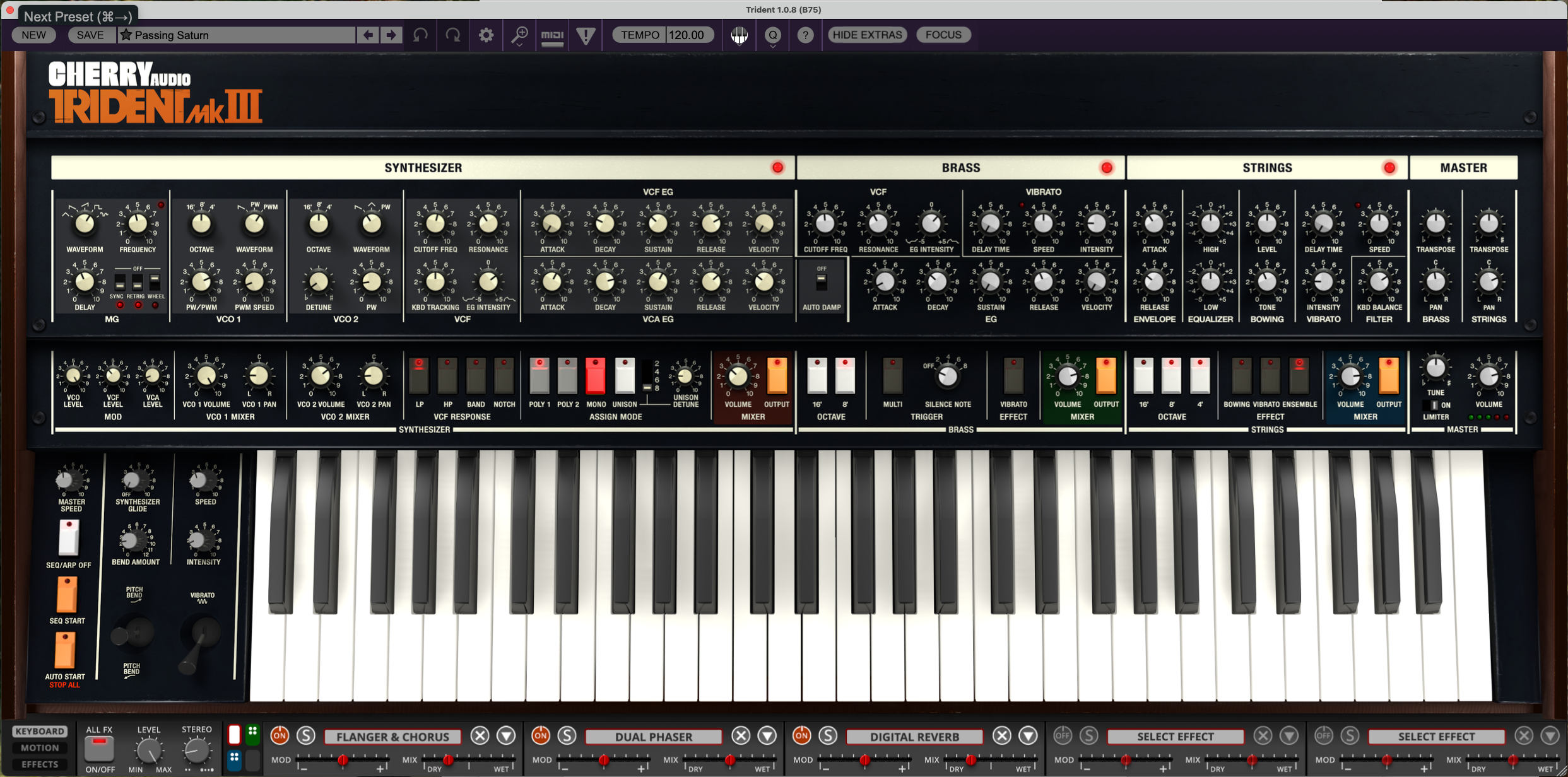
Strings and Brass
It could be easy to think that the strings and brass sections are somehow weaker than their synthesizer counterpart, but this would be an enormous mistake, because they not only carry enormous character, but they also have considerable hidden depths.
Both sections adopt paraphonic operation, meaning that they use a single envelope within each section, with all voices responding en masse. This can be seen as a limitation, but it’s more accurate to consider it stylistically accurate, being entirely representative of machines of this ilk, from this original era.
The brass section adopts saw-like mentalities, with a beautiful low-pass filter, which is accompanied by resonance. There is only a single envelope generator in this section, which is hardwired to the amplifier, but this can be used to modulate the filter too, in both a positive and negative modulation depth. There are two octave buttons, allowing selection of register, but they can also be activated simultaneously, resulting in an immediate thickening of texture. The strings section offers a similar trick, but with three octave buttons; the third provides an upper octave, which is ideal for brighter voicings.
The brass section also includes a trick from the original Trident, which allows the selection of the number of notes you would like to play before the brass section triggers. This can be set to 2,4,6 or 8 notes, and is really brilliant for introducing an extra layer, as your voicings become more enthusiastic and abundant.
The string section provides a little more control over sounds than the brass section, impressively so. While only offering a basic attack/release envelope, there are a couple of fundamental controls which interact with playing. Alongside a basic equaliser for adjusting high and low tone, a separate bowing parameter interacts with the attack phase, with the capacity to set attack tone, just like a real string player. In its most basic form, the string sounds are elemental, but they completely come alive with the addition of the ensemble effect, in line with all other string machines.

Hidden Motion
Beneath the synth fascia layer, there is a new section which provides enormous functionality, particularly if you enjoy using performance parameters and controls.
The new Motion layer is the place to go to access the internal sequencer and arpeggiator. There are, in fact, two of each; the sequencer section provides 2x16 steps, and can be programmed polyphonically, in step or real-time. You can also program accents and ties within your sequence.
Not to be outdone, there are two arpeggiators, which operate independently of each other. Where this becomes important is with the beautiful new engagement of the Quick Split section. With a keyboard graphic, you can see each of the three Trident layers and quickly adapt each to a specific area of the keyboard.
Combine this with the ability to apply either of the sequencers or arpeggiators to the Trident’s instrument sections, and you have an exceptionally versatile live performance machine. The Quick Split section is also equipped with snapshots, so you can change your splits quickly and easily.
Building on their previous effects technologies, there are 17 included effects in total, which can be applied globally or to individual sections. It’s unbelievably flexible. Trident also includes a new BBD Flanger, which is modelled on the original from the hardware Trident.
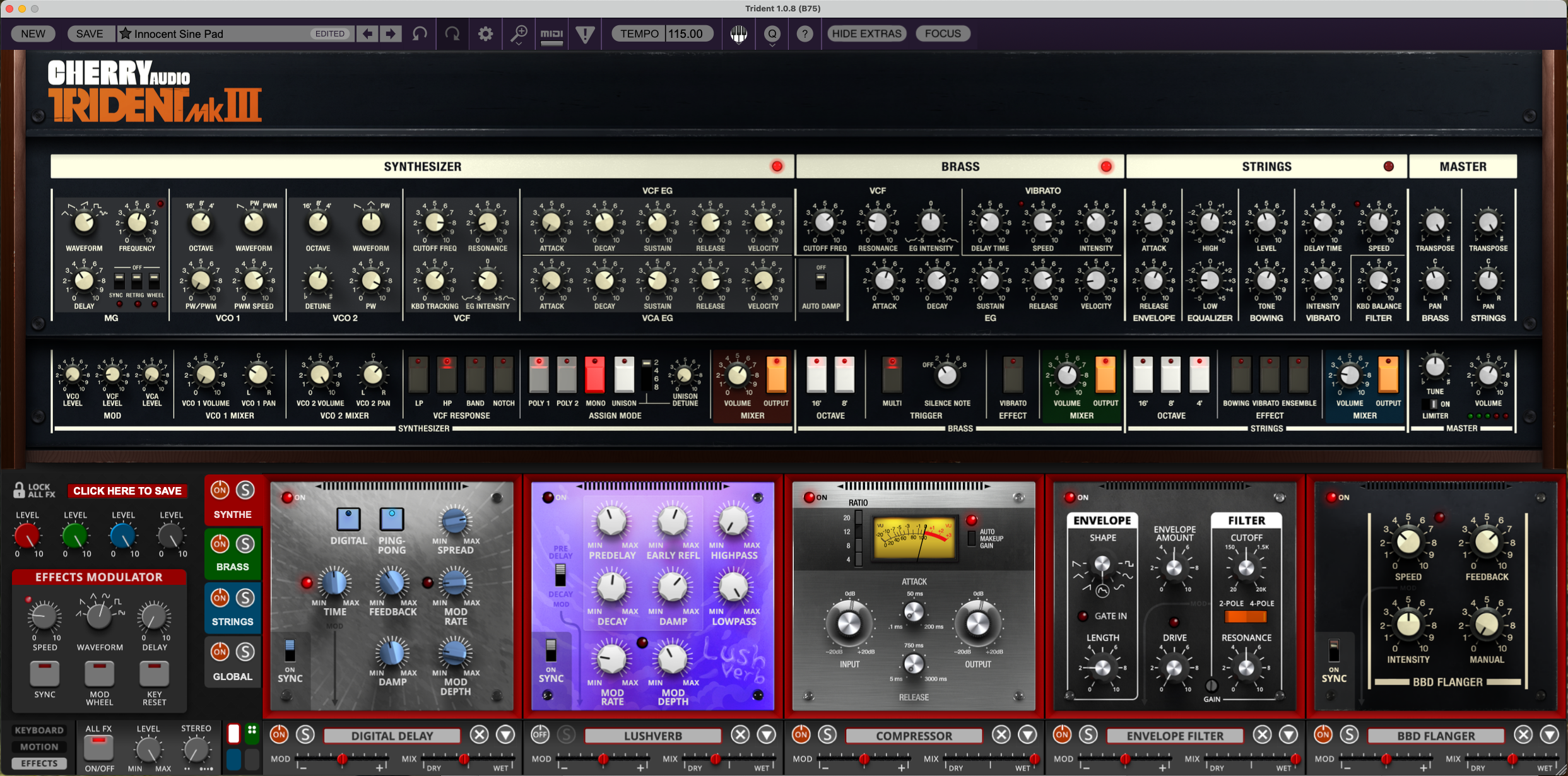
Verdict
Every time we find ourselves confronted by a new Cherry Audio plugin, we are continually impressed by the overall quality and design of both the plugin and its engaging performance and sound.
Trident takes this to yet another new level. The original was always a machine that was underexploited, at least that’s what the history books tell us. But now Cherry presents us with software which is so capable, in so many areas, it provides us with the capacity to create a radically different sound every day of the year.
Coupled with the new Motion section, and you have a fantastic performance tool, which engages beautifully within the DAW environment, rising well above the aforementioned synth and creative parapet.
Cherry Audio
Alternatives
This free software version of a Trident is available for Mac OSX and Windows PC, and offers an instantly accessible instrument - through a donation.
Although not an entire Trident, UVI’s huge and beautifully compiled suite of String Machines includes sounds from the Trident, along with more than 60 other machines.
Specifications
Price | $69 |
Platform | MacOSX and WindowsPC |
Format | AU, VST/3, AAX & Standalone |
Key features | 3 distinct sections: Synth, Brass & Strings Synth section offers 2xVCOs per voice and 4 filter states 16 note polyphony 17 onboard effects Over 370 included patches Full DAW automation |
Contact |
Roland Schmidt is a professional programmer, sound designer and producer, who has worked in collaboration with a number of successful production teams over the last 25 years. He can also be found delivering regular and key-note lectures on the use of hardware/software synthesisers and production, at various higher educational institutions throughout the UK
You must confirm your public display name before commenting
Please logout and then login again, you will then be prompted to enter your display name.
